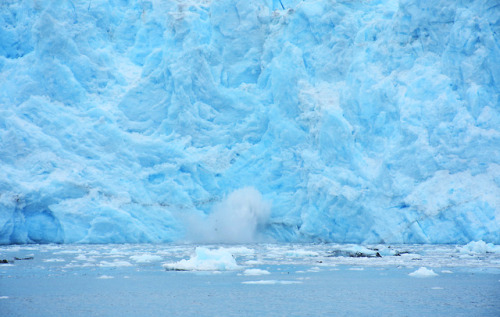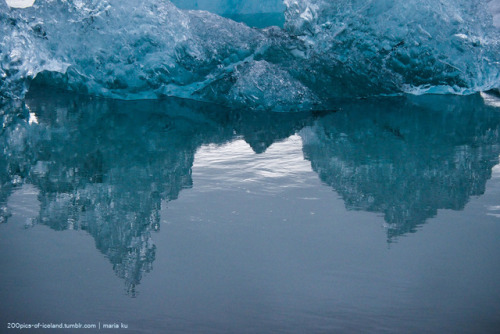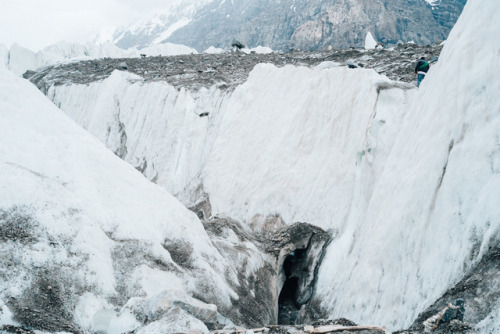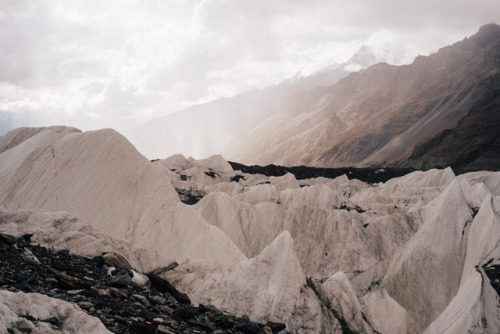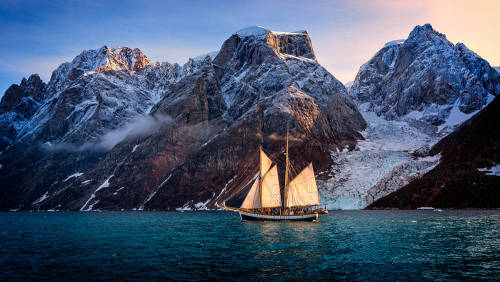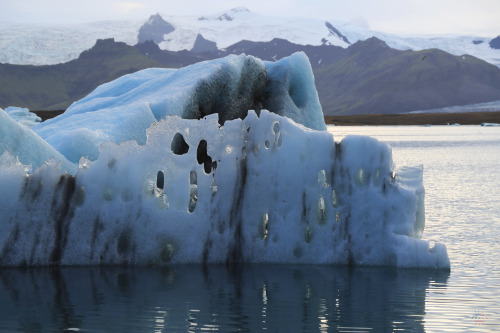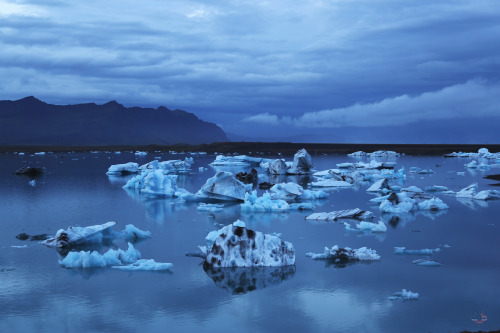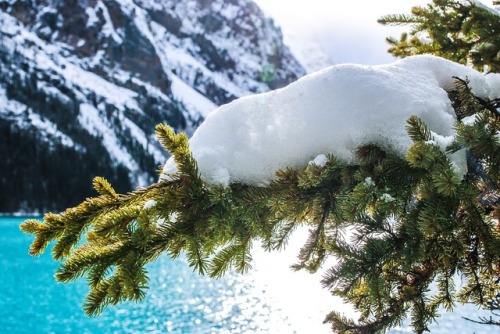#glaciers



Patagonia
A beautiful region shared by Argentina and Chile in the Southern Andes. Glaciers are a prominent feature which have carve mountains, and created lakes.
Chasing Ice: Photog Captures Changes in Glaciers Through Time-Lapse Photos
Here’s the amazing official trailer for the upcoming documentary film Chasing Ice, which follows one man as he embarks on an epic photo project around the world:
In the spring of 2005, National Geographic photographer James Balog headed to the Arctic on a tricky assignment: to capture images to help tell the story of the Earth’s changing climate.
[…] Chasing Ice is the story of one man’s mission to change the tide of history by gathering undeniable evidence of our changing planet. Within months of that first trip to Iceland, the photographer conceived the boldest expedition of his life: The Extreme Ice Survey. With a band of young adventurers in tow, Balog began deploying revolutionary time-lapse cameras across the brutal Arctic to capture a multi-year record of the world’s changing glaciers.
[…] It takes years for Balog to see the fruits of his labor. His hauntingly beautiful videos compress years into seconds and capture ancient mountains of ice in motion as they disappear at a breathtaking rate. Chasing Ice depicts a photographer trying to deliver evidence and hope to our carbon-powered planet.
The About page on the Extreme Ice Survey website states,
Guided by the recommendations of glaciologists, in 2007 the EIS team installed its time-lapse cameras at sites that represent regional conditions and have high scientific value. Typically these cameras are anchored on cliff faces above the glaciers. It took six months of experimenting to come up with a camera system sturdy and reliable enough for our purposes. We use Nikon D200 digital single-lens reflex cameras powered by a custom-made combination of solar panels, batteries and other electronics. The cameras are protected by waterproof and dustproof Pelican cases, mounted on Bogen tripod heads, and secured against arctic and alpine winds by a complex system of anchors and guy wires. Each unit weighs more than 100 pounds. Solar panels collect power that is stored in batteries; customized controllers trigger the cameras only when there is sufficient light. Downloads of digital images occur as frequently as every few months or as rarely as once a year, depending on how remote a site might be.
All this is to ensure that the cameras survive long enough to create time-lapse images that span years — or perhaps even decades.
Using Time-Lapse Photography to See the Movement of Massive Glaciers
People sometimes use the expression “slow as a glacier” to describe something so stagnant that even the speeds of snails and molasses would feel inadequately fast in comparison. The fastest glaciers ever measured move at tens of meters per day, while the slowest ones may budge only have a meter over the course of a year. Most of the time, the movement is too slow for the human eye to see.
Luckily for us, there’s something called time-lapse photography. Back in 2004, PBS aired a NOVA episode titled Descent into the Ice, which followed photographers and adventurers as they ventured deep into the heart of a glacier found on Mont Blanc. One of the things they did was set up cameras to capture the movement of glaciers over extremely long periods of time. The video above shows 5 months of movement seen under a glacier moving 2 feet per day.
They also shot a similar time-lapse from above ground. This next video was shot using a camera fixed 650 feet away from the glacier, and shows the glacier sliding down the mountain over the course of one entire year:
My top 5 from 2021
Although I did not get the chance to adventure and take as many photos this year as in the years’ past, I’m still grateful for these magical moments from the mountains this year that I will never forget, and thankful for the opportunity to cross off a few things off my bucket-list that have been waiting for a few years now.
by czechthecount:instagram|prints
Post link
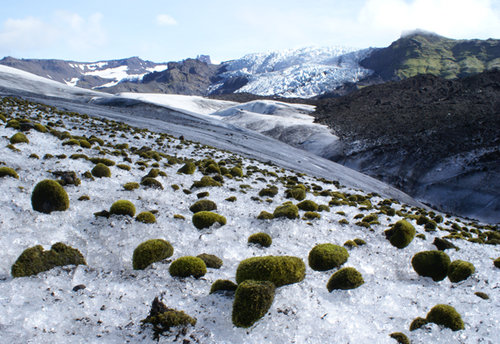
At first glance the surface of a glacier hardly seems hospitable. Cold, barren, and windswept, glaciers appear to be the antithesis of life. However, this assumption is completely completely false. Glaciers are home to an interesting ecosystem of their own, albeit on a smaller scale than we normally give attention to.
From pockets of water on the surface to literal lakes of water sealed away inside, glaciers are home to a myriad microbial life. On some glaciers the life even gets a bit larger. Glaciers are littered with debris. As dust and gravel accumulate on the surface of the ice, they begin to warm ever so slightly more than the frozen water around them. Because of this, they are readily colonized by mosses such as those in the genus Racomitrium.
The biggest challenge to moss colonizers is the fact that glaciers are constantly moving, which anymore today means shrinking. As such, these bits of debris, along with the mosses growing on them, do not sit still as they would in say a forest setting. Instead they roll around. As the moss grows it spreads across the surface of the rock while the ice rotates it around. This causes the moss to grow on top of itself, inevitably forming a ball-like structure affectionately referred to as a “glacier mouse.”

Because the moss stays ever so slightly warmer than its immediate surroundings, glacier mice soon find themselves teaming with life. Everything from worms to springtails and even a few water bears call glacier mice home. In a study recently published in Polar Biology, researcher Dr. Steve Coulson found “73 springtails, 200 tardigrades and 1,000 nematodes” thriving in just a single mouse!
The presence of such a diverse community living in these little moss balls brings up an important question - how do these animals find themselves in the glacier mice in the first place? After all, life just outside of the mouse is quite brutal. As it turns out, the answer to this can be chalked up to how the mice form in the first place. As they blow and roll around the the surface of the glacier, they will often bump into one another and even collect in nooks and crannies together. It is believed that as this happens, the organisms living within migrate from mouse to mouse. The picture being painted here is that far from being a sterile environment, glaciers are proving to be yet another habitat where life prospers.
Further Reading: [1]
“Where the glaciers meets the sky, the land ceases to be earthy…”
.
.
.
#art #instaart #conceptart #sketchoftheday #kristinavart #digitalart #sketch #nature #glaciers #visdev #visdevart #visualdevelopment #visdevartist
https://www.instagram.com/p/B4srbEND4Ec/?igshid=7rwyblarn3sv
Post link
A couple weeks ago I watched the documentary “Chasing Ice” on netflix about the serious impact climate change has had on our glaciers. Time lapse videos taken over a few years show the glaciers shrinking at an incredibly alarming rate. It took my breathe away. We’ve certainly seen the results of climate change first hand this year and it isn’t pretty. If you think this is as bad as it gets, you’re mistaken. This is just the beginning. Warming oceans will lead to more destructive storms, those of which are increasingly more difficult for people to recover from. This hits low income people the hardest. It displaces pets. It leads to lives lost. I want to open a dialogue right now. What small impacts can we make personally to affect change globally? It’s something that’s been on my mind for awhile now. I’m starting by switching to a more vegetable based diet, cutting out the use of paper towels, plastic straws, disposable coffee cups, tampons and face wipes. I’m making it a point to ride my bike more often. What else can we do? I’d love to hear some suggestions.
Also, please please watch Chasing Ice to see for yourself: https://chasingice.com/
Post link

We are small
Alaska
Seeing is to know, but that is not a feeling..A feeling is to do. Like a recipe. You cannot eat a recipe.
Post link




